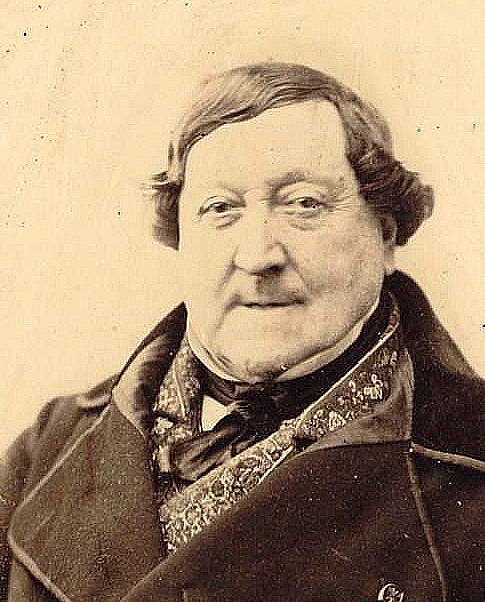
One of the most obvious differences between classical music and most forms of popular music is that the former invariably makes use of contrasts in loudness whereas the latter usually doesn’t. The vast majority of pop songs and folk songs tend to be the same degree of loudness throughout. In contrast, classical music makes frequent use of dramatic contrasts between soft and loud passages.
But it wasn’t always thus. Before the Early Renaissance, the concept of varying degrees of loudness, which we now call dynamics wasn’t given much attention. The 16th century composer Giovanni Gabrieli was one of the first to indicate dynamics in music notation, but did so sparingly – as did everyone else. However, during the Baroque, the emerging violin family permitted far more contrast in dynamics than the older viols and gradually composers began using softness and loudness as a means of expression.
In printed music, dynamics are indicated by abbreviated Italian terms. The indication to play softly is shown by a “p” which stands for the Italian word piano. The opposite is shown by the letter “f” which stands for the word forte. These two words gave their name to an early kind of piano known as a fortepiano, because it could literally play loudly and softly, which the clavichord couldn’t. By the 19th century, composers had gradually pushed the dynamic boundaries outwards. A passage marked “pp” (pianissimo) or “ppp” is virtually a musical whisper whereas the loudest passages are marked “ff” (fortissimo) or even in some extreme cases “ffff’, which is about as loud as you can get.
The concept of gradually increasing the volume – known as a crescendo – didn’t appear until the mid-18th century. The idea was developed, along with many other innovations by composers of the Mannheim School, who wrote for the orchestra of Duke Charles-Theodore. The crescendo and its opposite, the diminuendo became favourite musical devices in the opera. The Italian composer Rossini developed a technique of gradually increasing the volume, a device which he often used in his opera overtures. This dramatic effect has become known, not surprisingly as the Rossini crescendo. However, these extended crescendi (and note my pernickety use of the Italian plural) are not simply a matter of telling the orchestra to play louder and louder. There’s much more to them than that.
Gioacchino Rossini (1792-1868): Overture – La gazza ladra. Mannheim Philharmonic Orchestra cond. Boian Videnoff (Duration: 09:38; Video: 1080p HD)
Rossini’s opera La Gazza Ladra (The Thieving Magpie) is best known for its overture, famous for its use of snare drums which must have taken the audience aback at the opera’s first performance in 1817.
The work contains a splendid example of the Rossini crescendo. Well, two actually. After the percussive opening and a rumbustious melody the crescendo section begins (04.18) with a graceful lilting melody on the oboe accompanied by light strings and interjections from the clarinet and low brass. Rossini gradually adds more instruments and increases the number of musical events making the music not only louder but busier. It culminates in a joyful climax (06:09) with vigorous descending scales on the trombone – another Rossini trademark. Then, not one to miss a good opportunity, Rossini goes through the whole routine again (07:08) but this time using different orchestration. As the crescendo develops he changes the harmonies more rapidly giving the effect of increasing tension and increased speed. And towards the end, we hear another favourite Rossini trick (09:08) when he suddenly ratchets up the tempo and brings the overture to a heroic conclusion.
Maurice Ravel (1875 – 1937): Boléro. Vienna Philharmonic Orchestra cond. Gustavo Dudamel (Duration: 17:31; Video: 1080p HD)
Ravel’s most popular work is an orchestral piece that is built on a long and measured crescendo. It was originally a ballet and a sensational success when it was premiered at the Paris Opéra in November 1928. Nobody was more surprised at its success than Ravel himself.
Boléro begins with a snare drum playing an insistent rhythm pianissimo close to rim and this relentless rhythm dominates the entire work. Then at 00:33 we hear a faintly Arabic-sounding tune played softly on a solo flute. This melody, which came to Ravel when he was on holiday in Saint-Jean-de-Luz dominates the piece and it’s played on different instruments, some rarely seen in the symphony orchestra including the tiny E flat clarinet and the alto and soprano saxophones. Gradually the loudness, the texture and the tension is slowly tightened as more and more instruments are added. There’s a dramatic change of key at 16:27 when the entire orchestra thunders out the melody.
Dudamel and the Vienna Philharmonic give a memorable performance, and just watching Dudamel conduct is an uplifting experience. Now there’s a man who clearly loves his job.
 |
 |
 |





